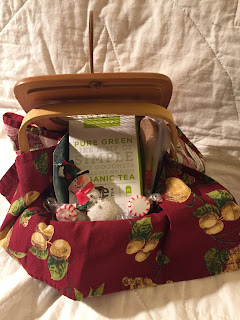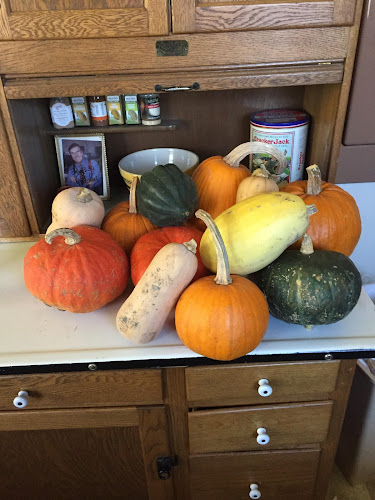Time for part two of the Super Savvy Shopper Savings Series. If you missed part 1, you'll find it
here.
This week we'll focus on Kroger. If you don't have a Kroger in your area, these tips can be applied to any major grocery store. I'll tell you how to prep and store all the bargains, too.
1. Dairy, Meat, and Produce Markdowns
These are marked with large orange and yellow stickers. They are manager specials, overstocks, or items which are close to their expiration dates. Generally the discounts are 50 - 75 percent! Check greens from all angles to see if they look especially wilted. I have found, in general, that discounted produce is still fresh for at least 4 or 5 days.
Discounted dairy can be frozen or eaten within a week. Cream cheese and sour cream get a weird texture if you freeze them. So avoid this mistake. Milk can be frozen if you open it first and pour out about an inch or two from the top. Recap and freeze. Thaw and shake it before use.
Meat needs to be cooked and frozen right away or repackaged and frozen immediately. The packaging from the grocery store is not really designed to be placed directly in the freezer. The thin plastic, especially on meat, allows too much contact with air and risks freezer burn. I find it convenient to repackage meat into smaller portions. Hamburger can be made into patties and frozen flat with waxed paper in between the individual patties. Place frozen patties into freezer bags. For chicken breasts, place each breast in a small quart freezer bag and
then freeze. In this way meat can be thawed in the exact portion you
need for your recipe.
Before freezing precooked hamburger, brown your beef in a pan, remove as much fat as possible, blot with a paper towel then run the cooked meat under hot water for five minutes and blot again with paper towels. You can remove up to 50 percent of the fat in this manner.
2. Look for the general merchandise clearance section.
Nearly every large grocery store has a separate area for items that are close to their expiration date, are lightly damaged, or are discontinued. Sometimes these are in a cart toward the back of the store or on a separate shelving unit. You can often find high priced and specialty foods in this cart marked WAY down! Often gluten free, organic, or vegan foods are in this area. It's worth a look each time you go to the store. I try to keep some of our monthly grocery money in reserve, just in case I find bargains amongst the markdowns.
3. Look for price reduced fruits and vegetables.
Most major stores have an endcap of sightly imperfect produce. These are generally of the same quality as what is on the regular shelves. Sometimes they are sightly too small or too large to be considered "A" quality produce. At times there are items which are getting toward the end of their viability for being sold. So, do take the time to look them over carefully, especially fruit, which can be bruised.
A few weeks ago I found bananas at a major grocery store marked at 50 cents a bunch! I bought ten bunches. Yep! I froze most of them. Just take them out of the peel and freeze in freezer bags. Thaw for use in smoothies or recipes. You can substitute banana for oil in most recipes.
4. Ask what time they do markdowns
Oh, this is such helpful knowledge! I generally ask someone who works in the department to be certain that I get a correct response. Sometimes the person who actually works in that department can give you great insider tips too. For instance, I know that our local Kroger does their markdowns at noon each day. We often stop by on our way home from church on Sundays to see if we can snag some half price organic greens for our salads. If I don't see any of the delightful orange and green tags, I take a moment to check the expiration dates. I discovered that if I find an item that expires with the next 48 hours and ask a salesperson they will go ahead and mark it down for me.
Use the sales flyer to your advantage. Look for loss leader items - those are the products on the front or the back of the flyer with big photos. They are generally offered by the store at a loss, to get you in their store. Once you are there, they figure that you will be lured into spending more time and more money on items that you didn't intend to buy in the first place. But, don't you do it! You stick to that budget and that written grocery list!
Plan out strategies for combining store and manufacturer coupons. Last week I was in Krogers and saw one of those free-standing coupon kiosks emblazened with the words, "Try it on us." Well that got my attention. Whatever was printed on that coupon was apparently being offered to me for free. Indeed, the coupon was for a free cream cheese (up to $2.69 in value). Coincidentally, the store flyer offered to take $4.00 off of my bill if I bought 4 cream cheeses. Quickly, I grabbed 4 coupons. I was able to combine the manufacture coupons with the $4.00 store credit. This meant that the store PAID me $4.00 to try the cream cheese.
One more strategy: if the store if out of stock of an item that is advertised at a really great price, take the time to stop by the customer service desk and ask for a rain check. Some rain checks require you to specify how many of the item you want at the sale price. There may be a maximum. In this case, I generally ask for the maximum. If you go into the store with your rain check and purchase fewer units at the sale price, it's not a problem. But, you can never purchase more at the sale price than you have written on the rain check. Finally, look carefully, some rain checks have an expiration date.
6. Use your store loyalty card.
If you are like me, you resist using anything that allows "big brother" to know exactly what, when, and how you are shopping. Although store loyalty cards do, indeed, do exactly that, they also give the store and manufactures an opportunity to send you big money coupons occasionally on items that you already purchase.
Additionally, you can also often use purchase points for money off per gallon of gasoline that you purchase at the gas station associated with the store. This works ONLY if you are purchasing items that you need, will use, and are offered at a great price. If you are spending hundreds of dollars more on your grocery will each month just to get a few dollars off of gasoline, then stop it - now!
On the bright side, I unexpectedly received coupons in the mail from Kroger last week. I got peanut butter, organic vegetables, and several other items at greatly reduced prices or for free! Overall, the store loyalty cards give me more bang for my buck and I will continue to use them, unless or until their methods of gathering information on my shopping habits becomes too intrusive.
I hope you found this helpful. Did I miss anything? Do you have any super tips to add to my list? Comment below. I'd love to hear from you.
Remember,
Do all to the glory of God,
Hope



























